Friends of White Rock Lake
Participate to Appreciate White Rock Lake Habitats Matter
Friends Programs
Youth Education
Sign up Your Class or Youth Group for a Texas state curriculum approved field trip with environmental education on sustainable activities at the lake.Building a Legacy
100% of Friends' Funds go to Support the local efforts to Preserve the White Rock Lake and Park for generations to come.Ghost Prairie Diary Tours
Guided tours of the Lake's Blackland Prairies a look into the Lost, threatened, and Endangered Native Plants and Animals.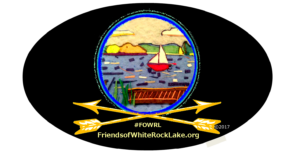 #FOWRL1 What do we need most? Friends!
#FOWRL1 What do we need most? Friends!
Friends of White Rock Lake (FOWRL) has pledged to protect native pollinator species and habitats in the Monarch flyway at White Rock Lake Park year round by engaging the community through wildlife education and restoration.
FOWRL is looking for DFW companies that want to be pollinator partners, offer service days, and financially support the (501c3) to help bring back sustaining wildflower prairies and habitats, clean air and water and land at the lake. Contact FOWRL President Evan Fielder at [email protected].
FOWRL is the nonprofit advocacy group for Blackland Prairies Program and counts towards carbon sequestration."
See what Friends are up to. LIKE US on Facebook. Click the blue button above, "Be a Friend"!
Thank you to every one who supported this event and who showed their interested in the Bioblitz
♥♥♥ ♥♥♥ ♥♥♥ ♥♥♥ 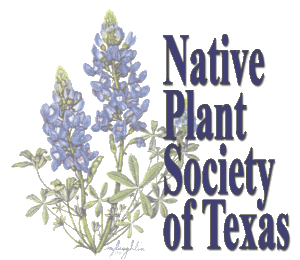
Join The Native Plant Society of Texas to access the White Rock Lake Chapter on Facebook and for Talks and a Walks information and details and how to participate.
Or go to our GreenBee.org signup page with your questions.
Website at NPSOT.ORG Coming Soon! Webmaster needed!
White Rock Lake Chapter meets every last Thursday of the month at the Ridgewood Recreation Center and at the White Rock Lake prairie at Boy Scout Hill.
♥♥♥ SAVE THE DATE - May 31st @ 7pm
Enjoy a native plant talk with Q&A Thurs. May 31st @ 7pm with former Dallas Zoo & Texas Discovery Gardens horticulturist. Write down your native garden questions!
Volunteers needed for raffle, refreshments. Feel free to bring snacks to share night of the talk.
Signup and or Like us at FriendsofWhiteRockLake.org (Friends) or go direct to the Facebook page for updates, or email [email protected] to volunteer or for more information.
If you would like to sign up with Native Plant Society of Texas for future talks, walks, seed swaps, plant exchange, and a holiday party to top off the year, go to
https://npsot.org/wp/join-renew/ Write "White Rock Lake" in comment box. All memberships signed in before May 31st will receive a special native plant gift bag $30 value.
♥♥♥ Spring 2018 FOWRL News! Its Not Just a Bee's Life in Peril.
Our Monarchs Are All But Disappearing at the Lake and You Can Help!!! 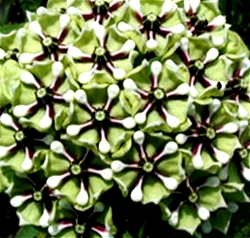
URGENT! Monarchs Struggling to Make a Full Migration Back to the US 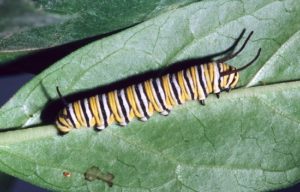
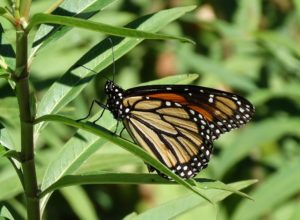 They Need Our Help. Now!
They Need Our Help. Now!
Companies, Individuals and Groups Needed!
Spring 2018 - With the recent sad news of the Monarch Mexico count yet again taking 15% dip this year upon their arrival, the Friends of White Rock Lake is working hard to make it a happy ending. They are reaching out to the community to locate a business owner, manager, etc. that handles wholesale (and or retail) natural type fertilizers (approx. 25 acre coverage) to help cultivate native wildflowers and habitat plants (milkweeds) to push out the non native plants for the Monarchs.
FOWRL is now scheduling dates for any companies that want to schedule (Apr.-Jun, Sep-Dec 2018) for a "prairie work day to weed the milkweeds" at the lake in the designated prairie flyway zone restoration areas. Please contact [email protected] or fill out the form at FriendsofWhtieRockLake.org to contact or donate (GreenBee.or is the donation and sign-up arm for FOWRL).
Thank you!
♥IMPORTANT MONARCH UPDATE MESSAGE
Consider planting a milkweed patch this year aka "A Pocket Prairie"!
♥ Mar 5 at 3:08 PM,Gail Manning, Entomologist, Fort Worth Botanic Garden
WWF Mexico announced the size of the overwintering population of monarch butterflies today. The area covered is 2.48 hectares, 15% less than last year, and less than half of the 6 hectares it is estimated that is needed to sustain the multigenerational migration. Let’s hope we can all increase the awareness of the need for monarch conservation!
[email protected]
City of Fort Worth — Working together to build a strong community.
From GreenBee.org FB page.
Loss of milkweed habitat in North America due to glyphosate and GM crops
Milkweed habitats have been declining since the introduction of GM crops engineered to tolerate glyphosate herbicides in 1996. Though glyphosate was used prior to their introduction, it was limited to pre-emergent application (before crops have started to emerge from the ground) and most milkweed escaped glyphosate exposure. Indeed, there are very few herbicides effective against milkweed, with glyphosate the most effective of all.
Furthermore, milkweed is generally considered a low-impact weed with regards to crop loss, making their destruction and that of the monarch totally needless. Since 1996, thorough weed surveys published in the scientific literature have documented dramatic drops in numbers, particularly in the Corn Belt, including an estimated 50% reduction in milkweed density in Iowa from 1999 to 2009.
In other US states including Minnesota, a several survey estimated a 100-fold higher level milkweed plants per ha in 2001 compared to 2003-2005. Out of 453 fields surveyed, milkweed was detected on only 3.4% of the fields. It is expected that similar patterns of milkweed loss have occurred in other non-surveyed areas in the Midwest where GM soy and corn production is widespread and steadily growing since.
Figure 2 (above, right) shows the increasing glyphosate use as well as the regions, with the Midwest showing some of the highest levels of glyphosate spraying, coinciding with the plantation of GM crops. An in-depth report form the Centre for Food Safety also lists personal observations from farmers that claim farmers have not seen milkweed in their fields for years in regions such as Nebraska and Kansas.
It must also be noted that analysis of overwintering butterflies during the 1996-1997 season showed that 50 % of butterflies originate in the Corn Belt, as determined by hydrogen and carbon isotope profiles in the wings which correlates with the latitudes of host plants, allowing researchers to map natal origins.
Repeating this work on the 2010/2011 season found that a smaller number of butterflies came from this region, suggesting changes in the heart of the Corn Belt are responsible for lower numbers reaching Mexico.
'Monarda are Red Cornflower are Blue, Lupine is Sweet And so is Mountain Laurel too! Give your sweetie natives for Valentines Day. Find out more at npsot.org'
YOU'RE INVITED! SEPTEMBER 23, 2017 Bioblitz Kickoff SOCIAL @7:00 @ CSC @ WHITE ROCK LAKE... JOIN IN THE FUN! RSVP HERE for map location and details. (First and last name and email required.) Share this INVITE with a pollinator prairie pal! LIKE us on Facebook by clicking the blue Be a Friend button above. Tweet us @ #FOWRL1 Like our Blackland Prairies Program on Facebook
Event Details Here
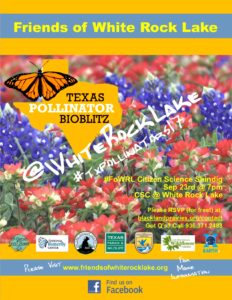
FOR MORE DETAILS SIGN UP!
Friends of White Rock Lake is a partner nonprofit program founded by volunteers dedicated to supporting action programs focused on the long term care, protection, restoration, preservation and management of the diverse, rare and endangered plants and animals species, and their habitats within our prairie and wetland areas of that make up White Rock Lake Park.
Friends encourages the community to help generate financial support for these important natural life giving program activities. Especially to support native pollinators and their habitats, one of the most vital species processes sustaining our native Blackland prairie ecosystem, food web, and a stabilization of ecosystem climate that supports the biodiversity.
The mission and purpose of the Friends is to encourage, establish, support and engage in year round activities at the lake that have and will sustain the BlacklandPrairies.org Program at the White Rock Lake Park. All donations to the Friends are tax deductible.
Volunteer Today through our GreenBee.org page host, and Save a Bee, Save Life Everyday!
LIKE US on Facebook. Click the blue button above, "Be a Friend"! #FOWRL1
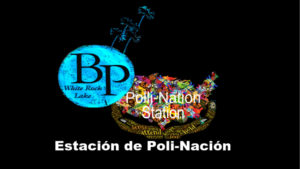
BLACKLAND PRAIRIES PROGRAM PRAIRIE FACTOIDS©
DID YOU KNOW THAT? First Saturdays in June each year is National Prairie Day.
NPD is an opportunity to educate the public about preservation, conservation, and restoration opportunities as well as the history, wildlife and habitats of the prairie. To understand the prairie is to look beyond what often initially appears simple, to learn about each form of life that thrives within it, to comprehend complex systems we can learn from, to ensure our future.
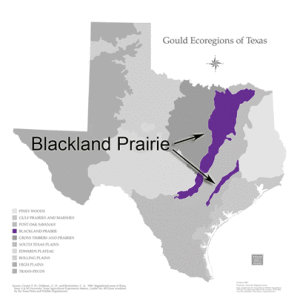
The natural beauty of prairies can be breathtaking. Today’s “amber waves of grain” were created from the fertile soil of these oceans of grasslands that were once tall enough to hide a man on horseback. Prairies inspired the paintings of Harvey Dunn in South Dakota, poetry from Walt Whitman, and books from authors such as Laura Ingalls Wilder in Missouri.
Prairie Basics: Grasslands, Plains and PRAIRIES Oh My!
Cross continent prairie/grassland ecosystems; See local Blackland Prairie Facts Below
- A “Prairie” is a tract of level or undulating grassland in North America. A prairie is North American grassland.
- “Grasslands” now cover approximately only 25% of the United States.
- Today, 1,276 native species of plants and wildlife in the US alone are in danger of extinction.
About 170 million acres of prairies that formed over thousands of years has been reduced in the last 150 years to 1 percent of habitat. (What happened?) Where once a vast and un-numbered variety of species thrived, the fertile soil now produces bumper crops of wheat, sorghum, flax, rye and oats. The result is the loss of complex established ecosystems that once supported precious native birds, pollinators, insects and other native wildlife—habitat loss contributing to extinctions. What remains is teeming with diverse flora and fauna species, many endangered of becoming extinct, with some still yet to be discovered and identified. Original tracts of undisturbed prairie serve as living ecological and native American cultural research stations. These models of precious ecosystems with genetic resources continue to be studied, their ecological worth and economic benefits yet to be realized.
- A wide variety of wildlife live in the prairie including birds, bobcats, coyotes, hawks, foxes, rabbits, reptiles, prairie dogs, prairie chickens, buffalo, bison, elk, and deer.
- A diversity of native prairie plants offer year-round food, shelter and nesting grounds for native habitat.
- The word “Prairie” is derived over the millennium from French, and further back in history.
(History – make link for; the word “Prairie” is derived in later times from French and possibly earlier times, BC from Arabic, Arameic or other ancient language.) (http://linguistics.stackexchange.com/questions/6598/can-the-word-prairie-be-derived-from-the-arabic-word-bararytract of level or undulating grassland in North America, by 1773, from French prairie "meadow, grassland," from Old French praerie "meadow, pastureland" (12c.), from Vulgar Latin *prataria, from Latin pratum "meadow," originally "a hollow." The word existed in Middle English as prayere, but was lost and reborrowed to describe the American plains. Prairie dog is attested from 1774; prairie schooner "immigrant's wagon" is from 1841. Illinois has been the Prairie State since at least 1861. In Latin, Neptunia prata was poetic for "the sea."tract of level or undulating grassland in North America, by 1773, from French prairie "meadow, grassland," from Old French praerie "meadow, pastureland" (12c.), from Vulgar Latin *prataria, from Latin pratum "meadow," originally "a hollow." The word existed in Middle English as prayere, but was lost and reborrowed to describe the American plains. Prairie dog is attested from 1774; prairie schooner "immigrant's wagon" is from 1841. Illinois has been the Prairie State since at least 1861. In Latin, Neptunia prata was poetic for "the sea.")
- .The “Savanna”, is the mixed bush and grass found in parts of Africa.
Other terms for extensive grasslands are steppe in Asia, pampas in South America. Temperate grasslands are located north of the Tropic of Cancer (23.5 degrees North) and south of the Tropic of Capricorn (23.5 degrees South).
- The major temperate grasslands include the veldts of Africa, the pampas of South America, the steppes of Eurasia, and the plains of North America.
There are also “Plains”
The Great Plains roll across; North Dakota, South Dakota, Montana, Nebraska, Kansas, Oklahoma, Texas, Wyoming, Colorado, and New Mexico, and the Canadian provinces of Alberta, Manitoba, and Saskatchewan.
- Is it a Plain or is it a Prairie? Plain is a geographical term used to describe a relatively flat piece of land with little or no elevation.
Plains are also characterized by the absence of any depression. Some of the well-known examples of plains in the world are Indo-Gangetic plains, Salisbury Plain, and the plain of Babylon. There is another term prairie that is similar to plains, which confuses many. It is also a flat piece of land with differences in vegetation. People use these words interchangeably which is incorrect. http://www.differencebetween.com/difference-between-prairie-and-vs-plain/
- Illinois has been the Prairie State since at least 1861..
- Prairie style architecture was based on the ideas of Frank Lloyd Wright and the Arts and Crafts movement where the Prairie style house plans were especially popular in the Midwest in the early 1900’s.
MORE PRIARIE FACTS The Blackland Prairie Ecological Region
- A portion of the Blackland Prairie Ecological Region of Texas extends into the eastern portions of Denton, Hill and McLennan Counties of north central Texas.
The region is underlain by Upper Cretaceous marine chalks, marls, limestones, and shales which gave rise to the development of the characteristic black, calcareous, alkaline, heavy clay soils. Early settlers were drawn to this region by these productive soils, gentle topography, and luxuriant native grasslands. Although historically a region of tall-grass prairies, today much of the land is devoted to cropland and other agricultural enterprises. Cotton, corn, milo, and wheat are grown throughout the region. Livestock grazing is also an important land use. Few remnant native prairie sites remain. Urban expansion into this ecological region is also increasing as the space for wildlife and wildlife habitat decreases.
Watersheds and riparian zones of the Brazos and Trinity River and their tributaries bisect the region and in these areas, habitat for a variety of wildlife species occurs. Upland wildlife species including small game animals, songbirds, waterfowl and shore birds, and a limited population of white-tailed deer use available habitat. Woody vegetation including mesquite, hackberry, elm, osage orange, and other woody species grow along fence lines and field borders providing habitat for wildlife. Other habitat for wildlife may occurs on steep or sloping terrains not subject to cultivation where communities containing species such as eastern red cedar, Ashe juniper, cedar elm, Texas persimmon, elbowbush, deciduous holly, live oak, and other woody species occur.
- The Blackland Prairies can be found sprawled across Texas from the Red River in North Texas to San Antonio in the south.
This area of about 12 million acres, while called a “prairie,” has much timber along the streams, including a variety of oaks, pecan, elm, bois d’arc, and mesquite. In its native state, it was largely a grassy plain — the first native grassland in the westward extension of the Southern Forest Region.
- Most of this fertile area has been cultivated, and only small acreages of grassland remain in original vegetation.
- In heavily grazed pastures, the tall bunchgrass has been replaced by buffalograss, Texas grama, and other less productive grasses. Mesquite, lotebush, and other woody plants have invaded the grasslands.
How did the Blackland Prairies get their name? The Blackland Prairies are called this because of the dark colored alkaline clay, referred as the "black gumbo" along with some gray acid sandy loams.
- Early explorers? "Alone on the range, the trance like soft buzzing hum from the prairie stills my eyes. There I behold a most unusual and most imaginable beauty, the Blackland Prairie of Texas. My heart filled with love of the land I have never known. Pioneering of a humble botanist. Trinity River Explorer, Alonso De Leon 1860." https://en.wikipedia.org/wiki/Alonso_de_Le%C3%B3n

- Urban biologists and wildlife biologists are trained to care for the prairie ecosystem.
- Prairie birds that come south for the winter to the North Texas prairies can look quite different when they are up north in the summer.
- The current rapid loss of complex established ecosystems that once supported precious native birds, pollinators, insects and other native wildlife have contributed to extinct, threatened, extirpated, and endangered native species and plans.
Why are Blackland Prairies important?
The Blackland Prairies are an important land form in Texas because it is a crop land and an agricultural enterprise. Some of the crops in the Blackland Prairies are hay, sorghum, cotton, corn, milo and wheat.
What have Prairies brought to the region?
The Blackland Prairies bring many farmers because of the crops in the area. Ranchers also use the area for beef cattle, goats and horses. It also brings hunters because of the deer and other small game animals that live in the area!
How was it shaped?
The Blackland Prairies were shaped by frequent wildfires that would stimulate wild grasses. Large herds of Plains Bison would also graze across the prairies, clearing the land as they went that helped with the biodiversity of the prairie.
Where are the Blackland Prairies located?
The Blackland Prairies can be found sprawled across Texas from the Red River in North Texas to San Antonio in the south.
- The Blackland Prairies are not in their original state anymore. There are small pockets of native prairie land that are protected by conservation groups.
- Urbanization, crop agriculture, and loss of landscape due to fire and grazing by large native herbivores have been the primary threats that have reduced the natural state of the prairie.
- Are there other prairies like the Blackland Prairies found across the United States?
- There are prairies found in South Dakota and Montana. The other prairie lands are facing the same challenges that the Blackland Prairies have encountered. Many only have a very small percentage of true grassland remaining.
- Similar prairie land in Texas like the San Antonio Prairies, Rolling Prairies, the Plano Prairies and the Fort Worth Prairies are similar within the Blackland Prairies?

More PRAIRIE FACTS White Rock Lake Trinity Water Shed Blackland Prairie Ecosystem
- A healthy native prairie is a sustainable ecosystem.
- White Rock Lake Park is in the Monarch butterfly flyway.
- Ninety percent of the monarch butterfly population is no longer. The overuse of glyphosate (Roundup), a herbicide in sensitive areas has destroyed much of the monarch habitat, which consists of milkweed and wildflowers

- Native bees are found to be 40 times more efficient pollinators than honey bees. We had 6 million beehives in 1947, now we have 2.5 million and a population increase of 123% (meaning we have 177.28 million more people in the U.S. today counting on almost 60% less bees than in 1947).
- Native prairie plants and animals are adapted to wide open spaces with few trees.
- White Rock Lake prairies are part of one percent of what is left of prairies that were once in the US.
- No milkweed = no Monarch butterfly population. Milkweed is where they lay their eggs and the larvae feed.
- Native plants work as erosion control on shorelines against shore waves and flooding.
- Prairie plantings can be considered a form of drought insurance as they are adapted to drought, grazing, and fire forbs (native wildflowers) are of particular importance as food sources for native insects and wildlife.
- Endangered plant species have yet to be studied for their medicinal potential
- Native seeds can be stored and propagated to protect endangered species and species biodiversity.
- Prairie plants act like a sponge for erosion and watershed protection. Native prairie plants with roots up to 15 feet deep act as a sponge, absorbing up to seven inches of rain without flooding and protect water supplies.
- Prairie plants sequester carbon and store it in the soil and not the atmosphere. One acre of prairie can store well over one ton of carbon per acre per year
- Prairie plants increase water quality due to the lack of fertilizers, pesticides, and herbicides use
- Prairies need grazing and or fire disturbance to thrive.
BLACKLAND PRAIRIES PROGRAM PRAIRIE FACTOIDS© Any and all of this may be shared with permission only.

Friends of White Rock Lake and likeminded groups and agencies across the nation work to restore our native pollinators, including local birds, migratory, wildflowers, native plants and other prairie animals for wildlife and water and land quality protection.
Blackland Prairies, a partner of the Dallas Park and Recreation Department and other likeminded nonprofits, has pledged to bring to the local community and beyond, through its BP3 (Blackland Prairies Preservation Program), an understanding and sense of prairie stewardship for our local prairie around White Rock Lake Park, which has about 163 acres of undeveloped prairie habitat right in the heart of the Dallas metroplex.
White Rock Lake praires are a part fo the Trinity River watershed which is home to a wide variety of plants and critters. Including a diverse population of pollinators that BP Program has set goals to protect and save, being one of the most diverse and sustainable pollinator ecosystems in the DFW area. BP Program was initiated and developed to take a responsible role to raise the public's awareness and involvement on this rewarding educational outreach project program.
These White Rock Lake prairies are part of the other 1 percent, that is prairies are going extinct across the United States. BP3 has taken the Million Pollinator Garden Challenge and is working on a 10 year plan to preserve, conserve, and restore these lands by incorporating best practices with alternative and organic processes to work the land with immeasurable and measurable benefits to our local community. BP3 is supported by the latest scientifically researched data and documentation on prairie benefits and the diverse species of flora and fauna habitats a prairie can offer.
Catch the most up to date BP prairie current events and information including the latest prairie happenings at White Rock Lake. Learn about prairie news you can use to support everyone's favorite little hill on the prairie, Boy Scout Hill! Join in the BP Ask an Expert Q&A Community Board. Get the BP app, BP Polli-Nation Station.
- Become a prairie steward today. Save a pollinator and save a life!
We love our prairie pals and welcome your feedback and suggestions. Use our Contact Us page to let us know your thoughts. Blackland Prairies will respond to messages within 48 hours.
